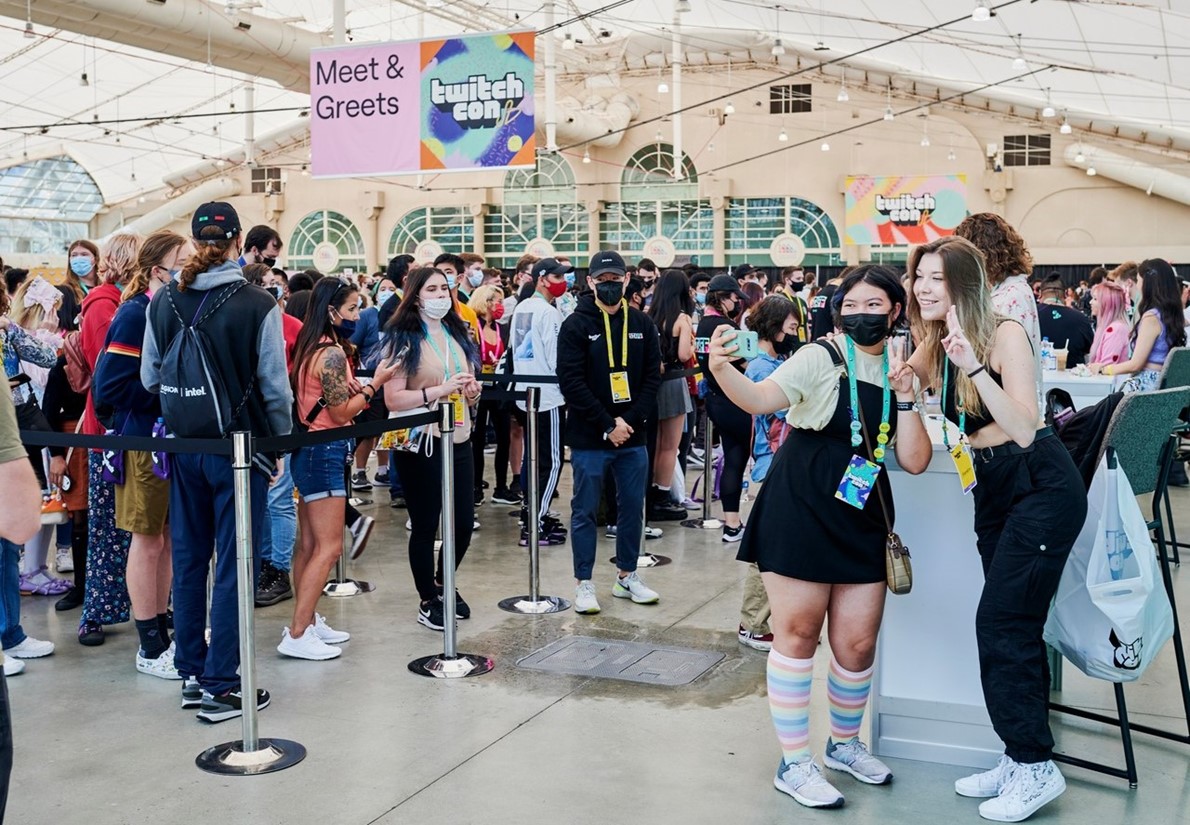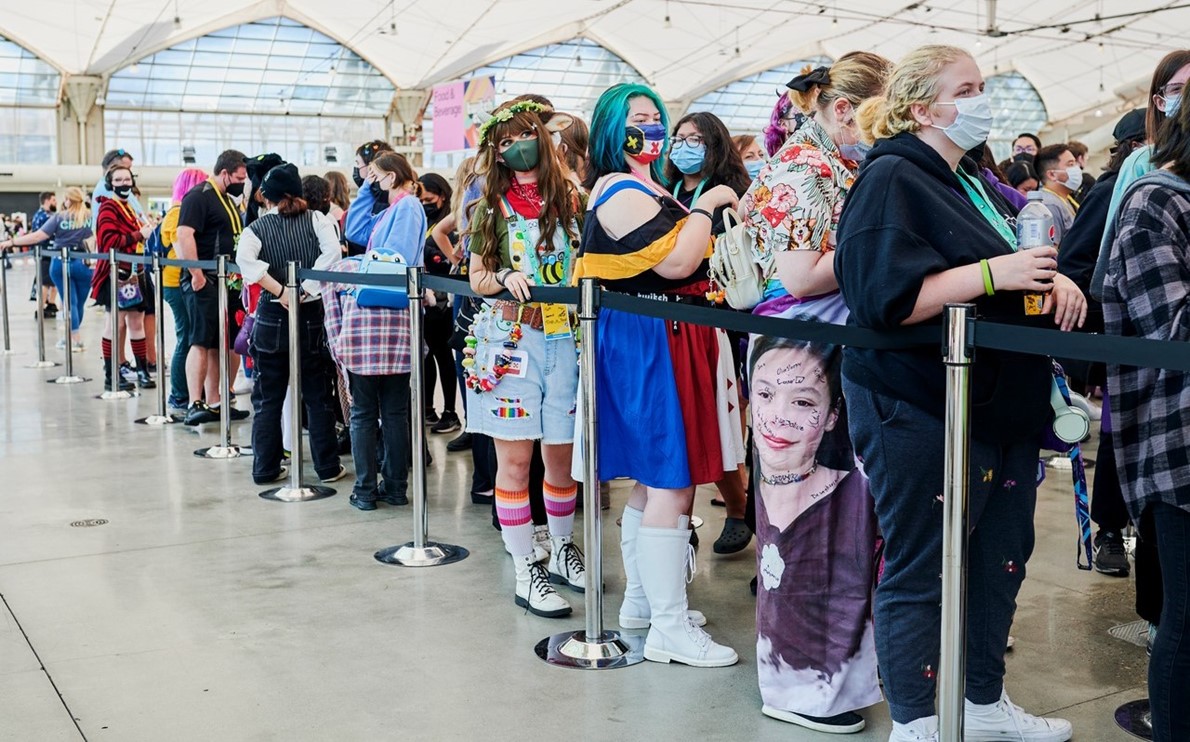For years, Twitch has wrestled with whether it could balance being a place
where
video game players could happily make good money from livestreaming to
fans with becoming a profitable company.
اضافة اعلان
That conundrum dogged the platform as it grew from a
small startup called Justin.tv to an Amazon-owned, pandemic-fueled behemoth in
the world of live video. Today, as many as 8 million streamers broadcast their
gaming exploits, cooking experiments and political hot takes every month to the
31 million viewers who visit the platform each day.
Along the way, Twitch has mostly maintained the
goodwill of the streamers who are its lifeblood. But that has been changing,
and streamers say they are increasingly worried that they are being forgotten
by the platform in the name of profits. More than a dozen star Twitch streamers
have switched to YouTube in recent years, and the service risks losing more to
other livestreaming platforms.
Rebellion was in the air this month at TwitchCon, a
gathering of 30,000 people in
San Diego where fans meet their favorite
streamers in person. Streamers, while holding their usual meet-and-greets and
reuniting with their friends, said they were angry about a recent decision
Twitch made to take a greater cut of the revenue some streamers make from fans
subscribing to their channels — a change they believe is emblematic of Twitch’s
shifting priorities.

“The displeasure with that decision is tangible,”
said Taylor Drury, who streams on Twitch as Taylien. “We’re all confirming with
each other: ‘You hate this?’ ‘Yeah, we all hate this.’”
Streamers say there are other signs that Twitch is
losing touch with its community, a complaint that has been leveled at other
streaming and video services over the years as they have matured.
An effort by Twitch to persuade streamers to run
more advertisements on their channels has dismayed creators who say more ads
will repel their viewers. The executives who were considered to be the biggest
supporters of the streamer community have departed. Streamers say communication
with the company has deteriorated, and they believe Twitch has prioritized
adding engineers over hiring people to handle their concerns.
Samantha Faught, a Twitch spokesperson, said Twitch
has tripled the number of employees in “community-facing” roles in the past two
years and added new ways for streamers to give feedback. She acknowledged that
because of the platform’s rapid growth, “it becomes harder to scale the
personalized communication and feelings of close connection”. She said
relationships with streamers remained a priority.
Streamers also wonder if Twitch is under pressure
from Amazon, which purchased the service in 2014. Andy Jassy, who took over as
Amazon’s CEO in July 2021, has looked for ways to control costs this year, as
Amazon’s growth has slowed to its lowest level in two decades. The company has
focused on efficiencies in its warehouses, shuttered teams with lackluster
projects, and temporarily frozen hiring in its retail division.
Amazon does not break out Twitch’s financials,
though analysts do not believe the site, which has more than 1,800 employees,
turns a profit.

“It’s wild that Amazon is trying to force Twitch to
squeeze more revenue out of top content creators,” Hasan Piker, one of the
site’s biggest names, said in an interview. At his booth on the convention
floor, Piker, known as HasanAbi on Twitch, was giving out faux newspaper front
pages with a provocative headline: “Twitch Steals 30 percent of Revenue From
Content Creators.”
The subscription revenue change will only affect
streamers with so-called premium deals with the platform that let them keep 70
percent of their subscription revenue, with 30 percent going to Twitch.
Starting next June, those streamers’ subscription earnings will be split 50–50
with Twitch after their first $100,000. The company said several hundred
streamers currently earn enough money to be affected by the change.
Dan Clancy, Twitch’s president, said in an interview
that the change would help Twitch pay for the rising costs of hosting live
video. He also argued it would eventually help streamers.
“Ultimately, the more we grow our audience, the more
our streamers benefit,” he said. “A big part of it is about trying to get to
this position that allows us to keep sustaining and steadily being able to
invest, being able to grow.”
Clancy said Amazon was not involved in day-to-day
decision-making.
“They give us a lot of freedom; they’re very bullish
on Twitch,” he said. “And so that is not one of those things where there is a
lot of detailed meddling.”

Twitch has also made several changes to appeal to
streamers in recent months, including giving them a greater cut of ad revenues,
letting them broadcast on rival platforms, and lowering the amount of money
they are required to earn on the site before they can cash out.
Twitch is betting that the new features will help it
appeal to a broader swath of streamers, even if policies such as the
subscription revenue change frustrate a handful of top personalities.
“I just don’t think the way to make deals with
streamers in the long run is to focus on cutting special deals with the top 0.1
percent of streamers,” Emmett Shear, Twitch’s CEO, said in an interview.
Instead, he said, the focus was on “making our standard deal attractive, which
I think it is”.
Some streamers at the San Diego conference said they
understood the rationale.
“What Twitch is doing, I like it,” said Antwayne
Doctor, who streams on Twitch as Babywock. He said he thought a 50–50 revenue
split was fair because, although he provides the entertainment, Twitch helps
grow his audience. “That’s a partnership,” Doctor said.
But former Twitch employees focused on relationships
with streamers said Twitch in recent years had prioritized its engineering
teams and moneymaking endeavors over keeping content creators happy. Ben
Goldhaber, who led content marketing and was one of Twitch’s first hires, said
Twitch first took off because of the strong bonds it built with streamers.
“That’s changed,” said Goldhaber, who was laid off
in 2018 and is now CEO of an esports app. “They’ve shifted away from this
original strategy of ‘Make the creators happy, and we win.’”

Some streamers and former employees also believe
that a management shake-up over the last two years has been indicative of
changing priorities.
Kevin Lin, Twitch’s co-founder and chief operating
officer, left in 2020. Sara Clemens, Lin’s replacement, and Michael Aragon, the
chief content officer, both departed this year. Clemens reacted to the
subscription revenue change by tweeting “SMH”, which stands for “shaking my
head”.
Lin was considered to be the face of the less
technical areas of Twitch, such as managing streamer relationships. Aragon was
someone “who could go into the executive meetings and fight toe-to-toe” against
proposals that were unfavorable to streamers, said Zachary Diaz, who worked on
Aragon’s team and left Twitch in January.
“Unfortunately, every executive who had that as a
mentality has left,” he said.
Faught, the Twitch spokesperson, said that was “absolutely
inaccurate”. She said beefing up product and engineering teams was “not at odds
with prioritizing relationships with streamers”.
Read more Technology
Jordan News



